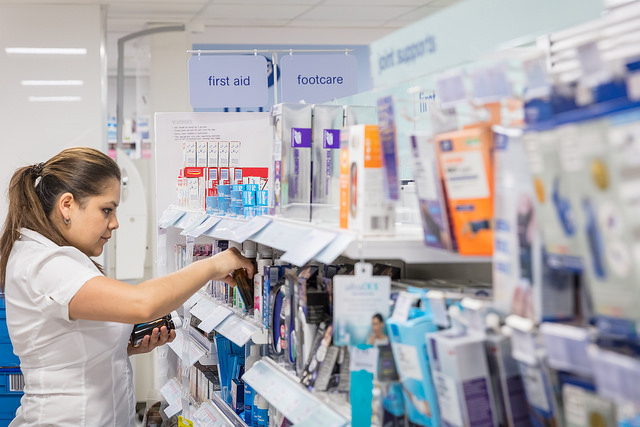
This past financial year (2023/24) saw a record net loss of 432 pharmacies in England1, meaning that an average of more than 8 pharmacies were closing each week. There are now 1,180 fewer pharmacies in England compared to 2015. The continued contraction of the pharmacy network poses a risk to patient access to medicines, and the delivery of the flagship Pharmacy First Service.
Since 2015, core funding for community pharmacy in England has been cut in real-terms by 30%2 and in that time, there has been a net loss of nearly 1,200 pharmacies. The 2023/24 financial year witnessed a record 432 net closures, equating to more than 8 pharmacies permanently closing each week. This is a concerning trend which could have disastrous impact on patients, especially since the most deprived areas continue to carry the weight of these closures.
The Company Chemists’ Association (CCA), the trade association for large pharmacy operators across Great Britain analysed permanent closures of community pharmacies in England since 2015.
A breakdown net closures by financial year between 2015/16 and 2023/24 is provided below.

Additional analysis by the CCA has shown that of the permanent closures that took place between 1st April 2015 and 24th February 2024, 34.9% took place in the top 20% of deprived communities3. The CCA is concerned that this trend of pharmacy closures may undermine the access to healthcare in deprived areas, despite there being greater need of primary care in precisely these areas.
Closures in areas of deprivation further contribute to ’distance decay’ for accessible and preventative healthcare. The further patients must travel to remaining pharmacies will impact the likelihood that they will use these services. Services such as Pharmacy First which could greatly reduce the pressure on GPs and give patients more immediate access to advice and treatment for common conditions.
Malcolm Harrison, Chief Executive of the Company Chemists’ Association said: “Pharmacies continue to close at an unprecedented rate. The real-terms cut to core funding of over 30% since 2015 is simply untenable.
Our analysis has also highlighted that unfortunately, these closures are disproportionately affecting the communities who need primary care access the most.
Pharmacies cannot be expected to operate at a loss, and effectively subsidise the NHS, any longer. Without significant additional funding, fewer pharmacies will result in patients finding it even harder to access the medicines and clinical NHS care that they need”.
Notes to Editors:
- IMD decile – the 32,844 Lower Layer Super Output Areas (LSOAs) in England are ranked from most to least deprived, and then divided into 10 equal groups. LSOAs in decile 1 fall within the most deprived 10% of LSOAs nationally and LSOAs in decile 10 fall within the least deprived 10% of LSOAs nationally. When talking about the ‘most deprived communities’ within this paper, we are talking about areas with an IMD decile of 1 or 2. Postcodes for pharmacy closures as listed in the NHS ODS publication are matched to an IMD decile using the Ministry of Housing, Communities and Local Governments English indices of deprivation 2019 postcode lookup tool.
- Funding – In May 2023, Government and NHS pledged a £645m investment in community pharmacies over the next two years to expand the pharmacy oral contraception and blood pressure services this year and a Pharmacy First service in England.
Methodology:
- The CCA used the pharmacy data (downloaded as the eDispensary files) from NHS Digital’s Organisation Data Service (latest update 24th February 2024) to analyse the permanent pharmacy closures, brand new pharmacy openings and overall net changes between 2015 to 2022. Available here.
- A ‘permanent’ pharmacy closure refers to bricks and mortar pharmacies that have closed for the last time at a given address and have not since reopened, been sold, or moved. (See column L of the NHS Digital eDispensary spreadsheet which can be accessed here).
- A ‘true new’ or ‘brand new’ pharmacy opening refers to bricks and mortar pharmacies that have opened for the first time at a given address and are not the result of a reopening, a sale or a move. (see column K of the eDispensary file).
- The General Pharmaceutical Society (GPhC) pharmacy register, and the NHS Find a Service list were used where further confirmation was needed to determine the status of a pharmacy.
- The postcodes of the resulting data were then cross-checked against their deprivation status using the Department for Levelling Up, Housing and Communities English Indices of Deprivation 2019 postcode look up tool, accessed here. The CCA matched the postcodes by deprivation decile on a scale of 1 to 10, with 1 = the most deprived, and 10 = the least deprived.
References:
- Figures for 2023-24 use the Pharmacy Openings and Closures Dataset, NHS Business Services Authority, March 2024
- Community Pharmacy England, Information for politicians
- Figures for financial years 2015/16 – 2022/23 uses CCA analysis of NHS Digital Organisation Data Service data (downloaded as eDispensary files), February 2024.
